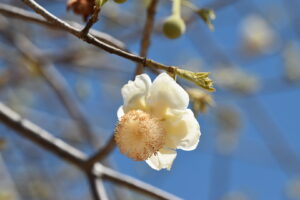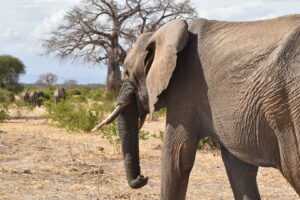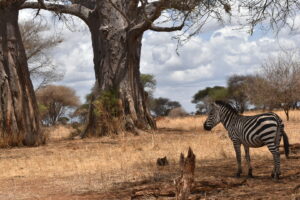The mighty Baobab - The Tree of Life
Travel through the dry savannas of Tanzania, and you’ll soon encounter one of the most iconic symbols of the African landscape: the baobab tree. Known for its massive trunk and strange, root-like branches reaching toward the sky, the baobab is often called the ‘upside-down tree.’ But it’s much more than a visual marvel – it’s a source of life, culture, and mystery.
While baobab trees are indeed fascinating and possess some sponge-like characteristics, they are still classified as trees. The baobab’s unique ability to store water in its thick trunk and bark, giving it a sponge-like texture, is a key adaptation for surviving in arid environments. This water storage, along with other features like its shallow root system and ability to shed leaves, allows it to thrive in areas where other plants struggle.
Baobab Tree Overview
Scientific name: Adansonia
Common names: Baobab, ‘Tree of Life’
Lifespan: Some trees live over 1.000 years (a few may reach 2.500+ years)
Height: Up to 30 meters
Trunk diameter: Can exceed 10 meters
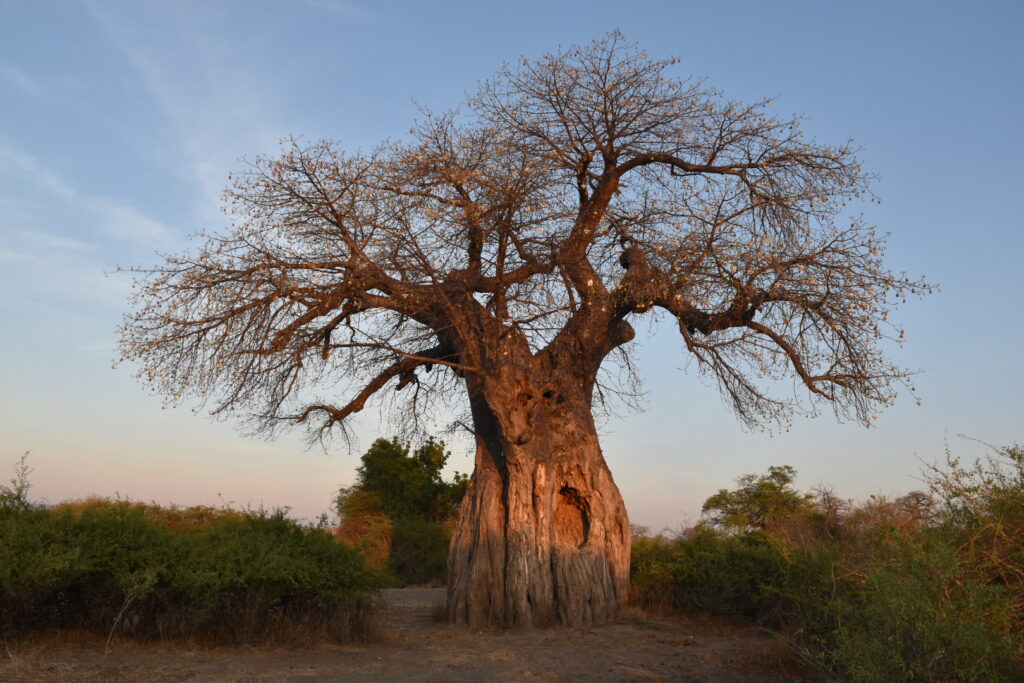
Baobabs thrive in Tanzania’s arid and semi-arid regions, especially in:
Tarangire National Park – famous for its towering baobabs and elephant herds
Ruaha National Park – home to some of the oldest and thickest baobabs in East Africa
Dodoma, Singida, Iringa, Manyara – regions where baobabs often grow near villages and rocky hills
These trees can live for over 1.000 years, silently witnessing generations of life unfold beneath their shade.
Ecological Role - The Tree of Life
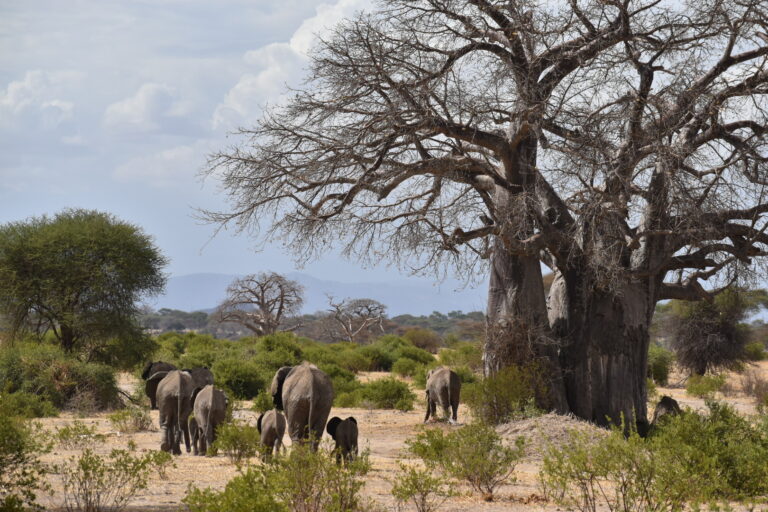
The baobab plays a critical role in the ecosystem:
Water Storage: Stores thousands of liters of water in its trunk to survive long dry seasons
Wildlife Habitat: Provides shelter and food for birds, bats, monkeys, elephants, and insects
Pollination: Mainly pollinated by fruit bats and bees, especially at night. The flowers of the African baobab tree bloom at night. They start to open just before sunset and bloom throughout the night during which they are pollinated. The next day they will start to wilt and fall off. Not all flowers of one tree will bloom at the same time. During its flowering season, the tree may bloom during various weeks.
Soil Protection: Helps prevent erosion in fragile landscapes
- Nutrient Cycling: Baobabs shed their leaves in the dry season, and their nutrient-rich leaf litter decomposes to enrich the poor, sandy soils where they grow. Fallen fruit and leaves become food and fertilizer for the forest floor.
Local Uses and Cultural Significance
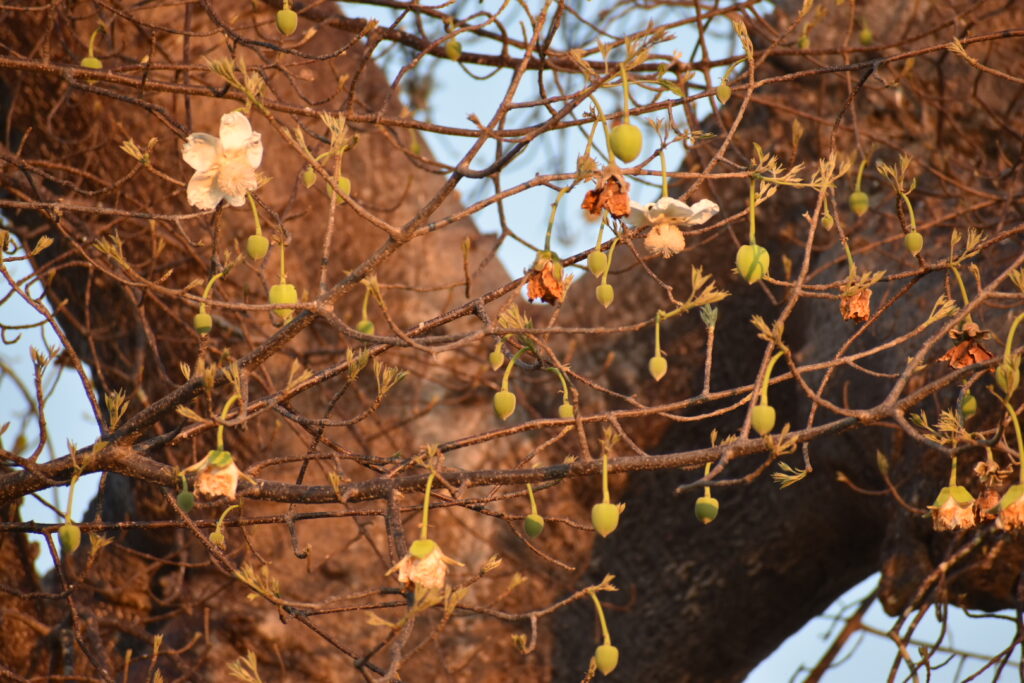
Baobabs are deeply embedded in Tanzanian rural life:
Food:
The pulp of the fruit is rich in vitamin C and antioxidants — mixed into porridge, juices, or eaten raw
The leaves are boiled as a vegetable or dried and ground into powder
Medicine:
Bark infusions used for fever, infections, malaria
Leaves and seeds help with inflammation, digestion, and skin conditions
Crafts:
Bark fibers used for rope, mats, baskets
The hollow trunks of ancient baobabs are sometimes used for shelter or grain storage
Spiritual Beliefs:
In some Tanzanian communities, baobabs are sacred — seen as homes of spirits or ancestors
Local folktales often describe baobabs as wise elders or as cursed trees planted upside down
From Tradition to Global Markets
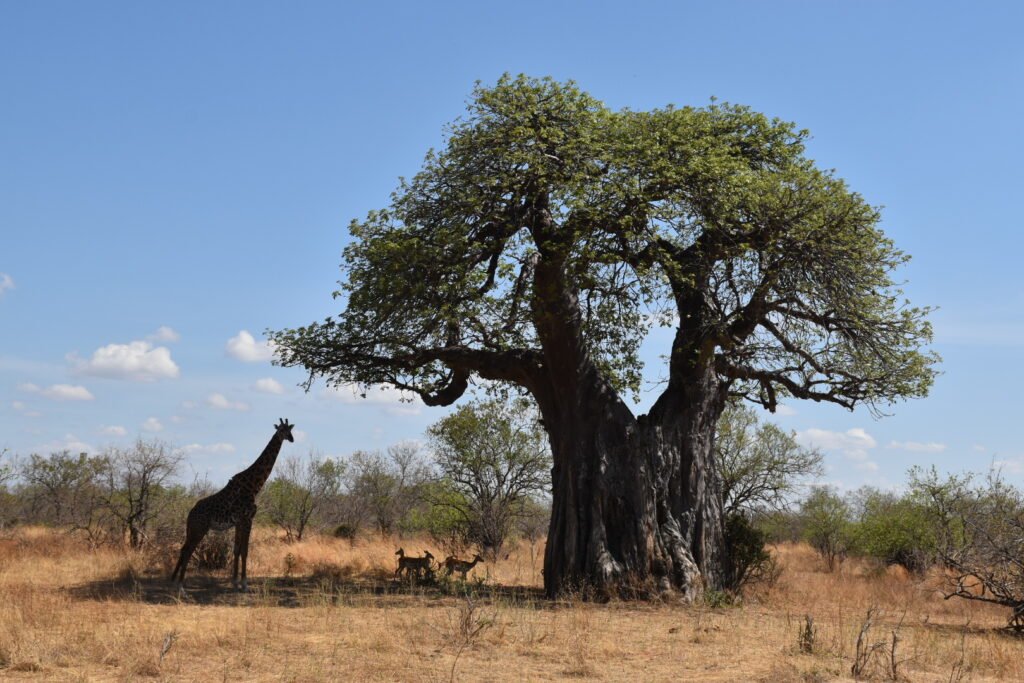
Baobab is becoming increasingly important beyond traditional uses:
Superfood Trend:
Baobab fruit powder is exported for use in smoothies, health foods, and supplements
Rich in fiber, calcium, and vitamin C
Natural Cosmetics:
Baobab oil is popular in organic skin care for its hydrating, antioxidant properties
Community Impact:
Women’s cooperatives in Tanzania are harvesting baobab products sustainably and generating income through fair trade
Myth & Stories

The Upside-Down Tree
The gods planted the baobab in a fit of anger, upside down, so its roots pointed to the sky. Why? Because the baobab complained too much – about its looks, its neighbors, and where it was planted. The gods finally had enough and tore it out of the ground, replanting it upside down to silence it forever.
Symbolism:
- Humility
- Cosmic balance
- Divine punishment
Baobab and the Elephants
Long ago, elephants came to the baobab tree during a drought. The baobab, full of water in its trunk, generously offered them a drink. Grateful, elephants vowed to protect the tree forever. Today, elephants still eat the bark and dig into trunks – not out of cruelty, but out of an ancient bond.
Symbolism:
- Generosity
- Symbiosis between species
The Spirit Tree
Baobabs are the homes of ancestral spirits. Offerings of food or coins are placed at the base to honor these spirits and ask for guidance or blessings.
Symbolism:
- Ancestors and the spirit world
- Sacred connection between past and present
The Baobab’s Curse
A hunter killed an animal near a sacred baobab and disrespected the tree. Afterward, his village was struck with bad luck – drought, illness, and crop failure. The village elders said the tree had cursed him for defiling sacred ground.
Symbolism:
- Respect for nature
- Sacred boundaries and taboos
The Tree of Life
The baobab is often called the ‘Tree of Life’ because it gives food, water, shelter, and medicine – everything needed for survival in harsh climates. Some tribes believe it was the first tree ever created by the gods.
Symbolism:
- Creation
- Life-giving force
- Survival
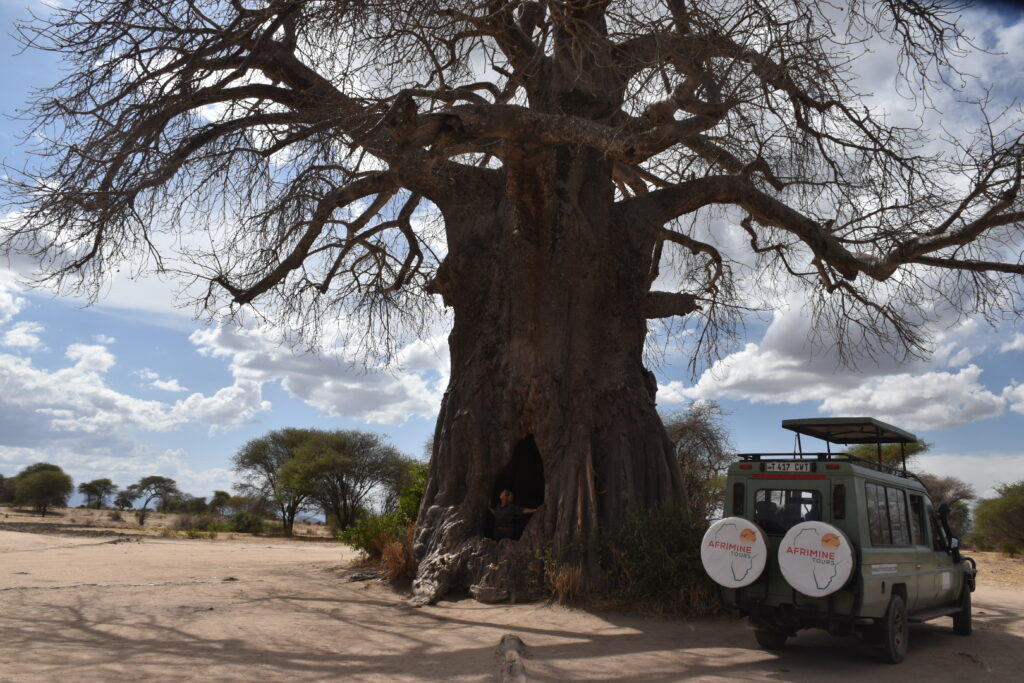
The Baobab tree provides several edible parts that are nutritious, versatile, and used in traditional and modern cuisine. We breakdown of what parts are eaten and how they’re used:
Baobab Fruit (Monkey Bread)
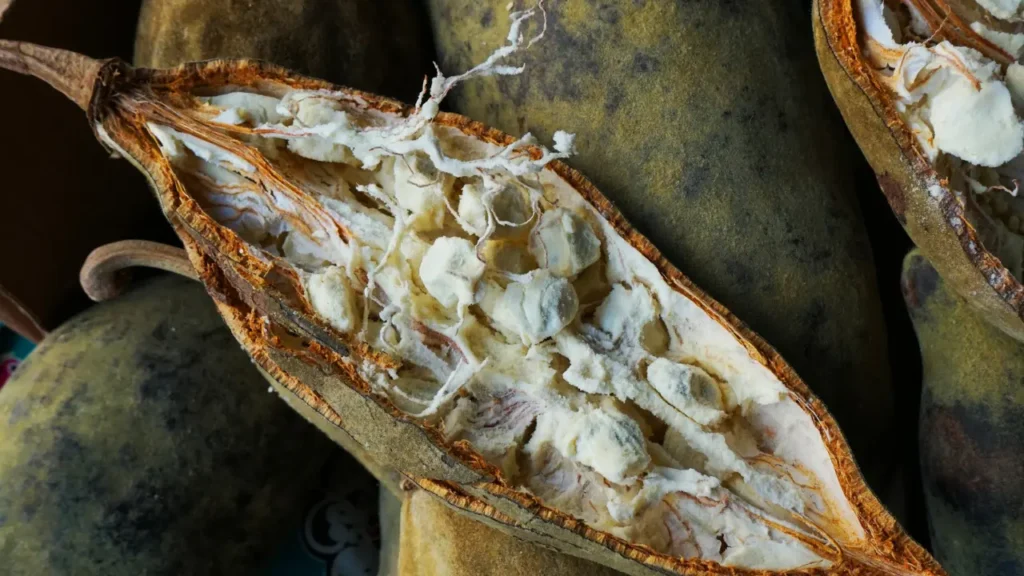
Most well-known edible part
🔸 What it looks like:
Hard, woody shell (like a coconut)
Inside: dry, powdery pulp surrounding seeds
🔸 How it’s eaten:
Raw pulp: Tangy, slightly citrusy — eaten like candy or mixed into porridge
Powdered form: Stirred into water, juice, smoothies, yogurt
Baked goods: Used in muffins, energy bars, breads
🔸 Nutritional value:
Vitamin C: 6× more than oranges
Calcium: more than milk
Fiber: 50%+ of content
Antioxidants: Very high (supports immune and gut health)
Leaves
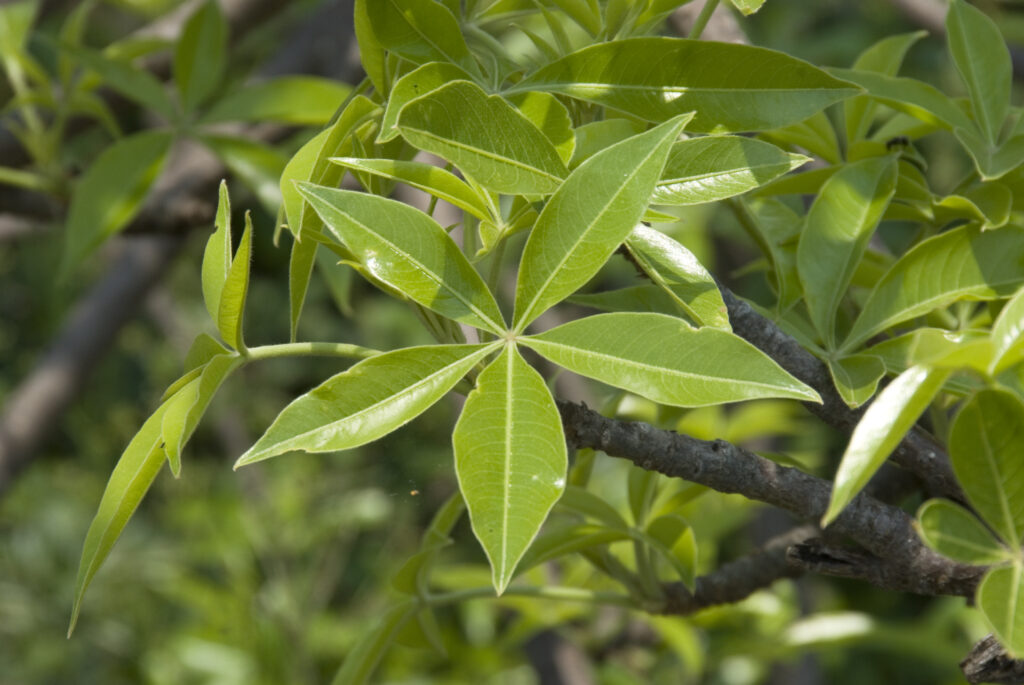
🔸 How they’re used:
Eaten fresh, cooked, or dried and powdered
Common in soups, sauces, and stews (especially in West Africa)
Powdered leaves are sometimes called “lalo” in parts of Mali and Senegal
🔸 Nutrition:
Rich in iron, calcium, protein, and vitamins A & C
Used in traditional medicine to treat fever, asthma, or inflammation
Seeds
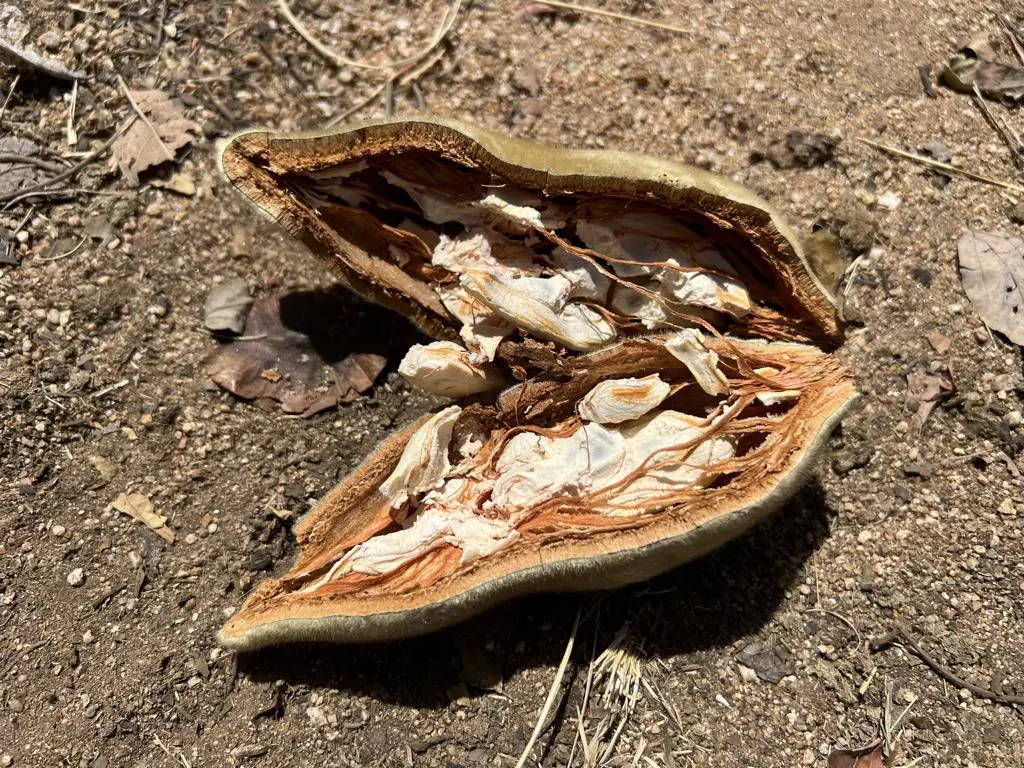
🔸 How they’re used:
Can be roasted and eaten like nuts
Ground into oil (used in cooking or cosmetics)
Sometimes fermented for condiments
🔸 Nutritional facts:
High in protein and healthy fats
Oil is rich in omega-3 fatty acids
The Baobab tree has been used for centuries in traditional medicine across Africa for a wide range of conditions. Modern research is increasingly supporting some of these uses thanks to the tree’s anti-inflammatory, antioxidant, antimicrobial, and nutrient-rich properties.
Immune Booster
Part used: Fruit pulp
Why: Extremely high in Vitamin C (6–10× more than oranges), plus antioxidants
Benefit: Enhances immune function, fights infections, reduces fatigue
Anti-inflammatory & Pain Relief
Parts used: Leaves, bark
Traditional use: Infusions or poultices for fevers, joint pain, swelling
Modern finding: Contains polyphenols and flavonoids that help reduce inflammation
Digestive Health
Part used: Fruit pulp (especially in powder form)
How it helps:
High fiber content (both soluble and insoluble)
Supports gut health and helps relieve constipation
Prebiotic effect – feeds beneficial gut bacteria
Rehydration and Electrolyte Balance
Traditional use: Baobab pulp in water for diarrhea or dehydration
Why: Contains essential minerals like potassium, magnesium, calcium, and iron
Dental & Oral Health
Part used: Bark and leaves
Traditional use: Chewed bark or leaf poultices to treat gum infections, mouth sores, or toothaches
Blood Sugar Regulation
How it helps: Baobab slows the absorption of sugars into the blood due to its high fiber and polyphenol content.
Result: Helps manage blood sugar spikes – useful for people with diabetes or insulin resistance
Skin Care & Healing
Part used: Baobab seed oil
Use: Applied topically for wounds, burns, dry skin, eczema
Why: Rich in vitamins A, D, E, F, omega-3, and fatty acids
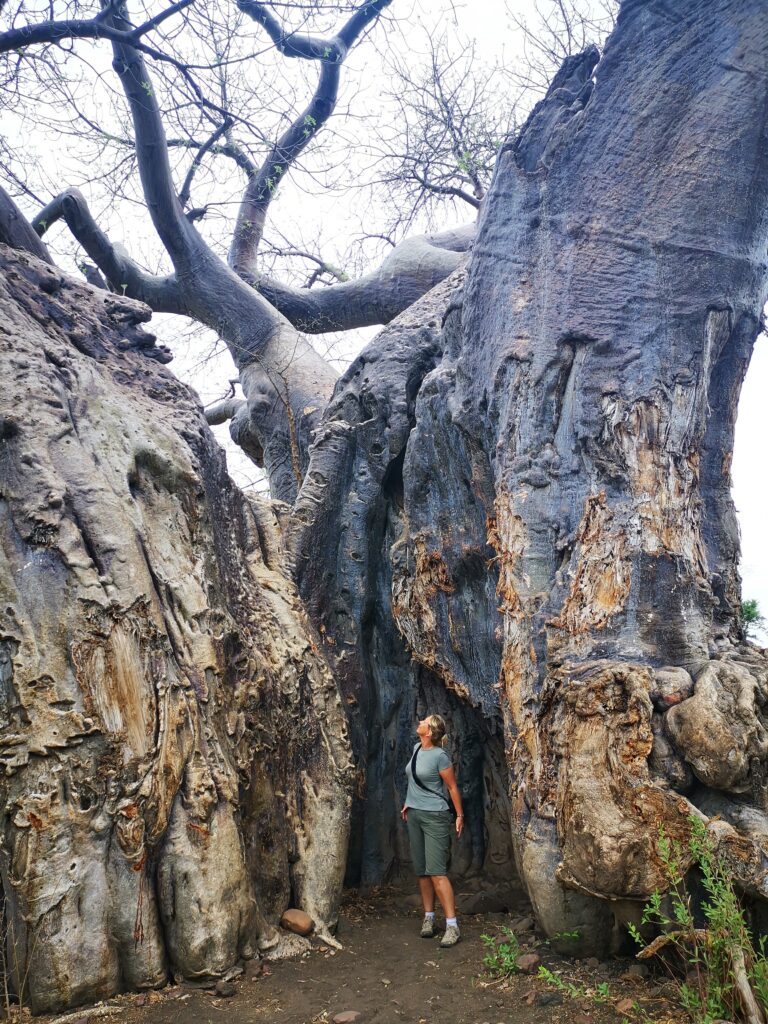
The baobab is more than just a tree – it’s a symbol of survival, wisdom, and interconnection between people, animals, and nature. To sit beneath a baobab in Tanzania is to share space with one of Africa’s oldest living witnesses.


